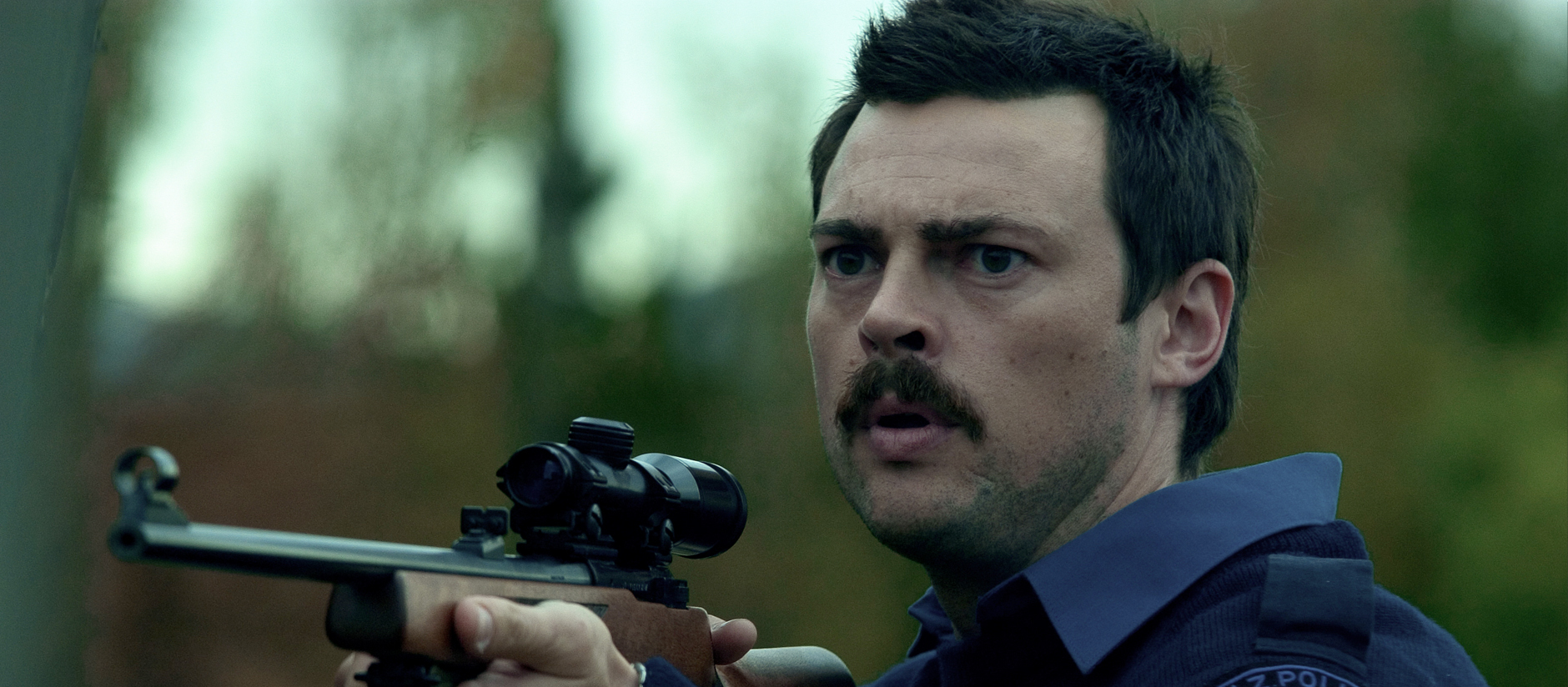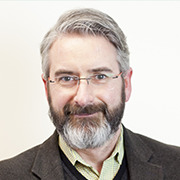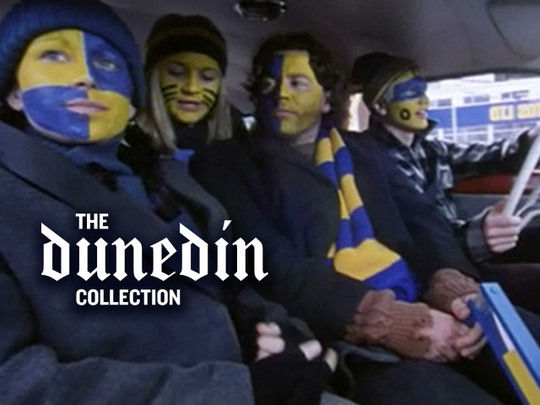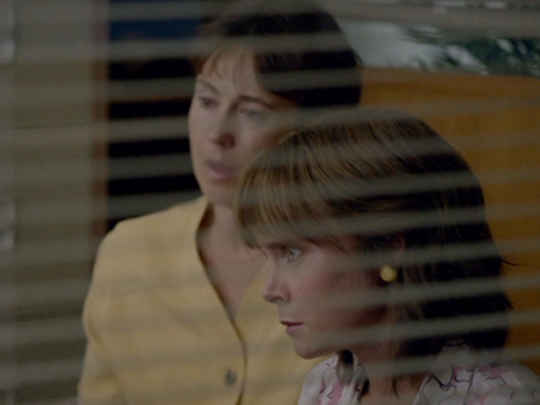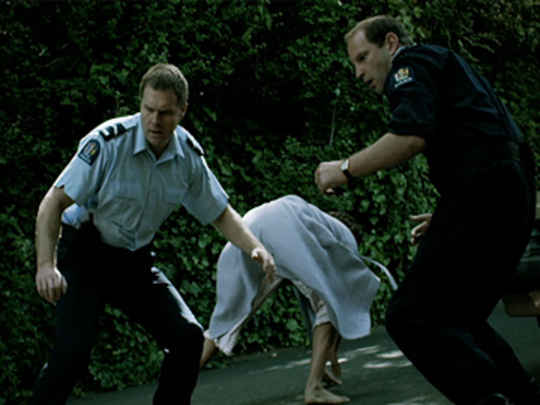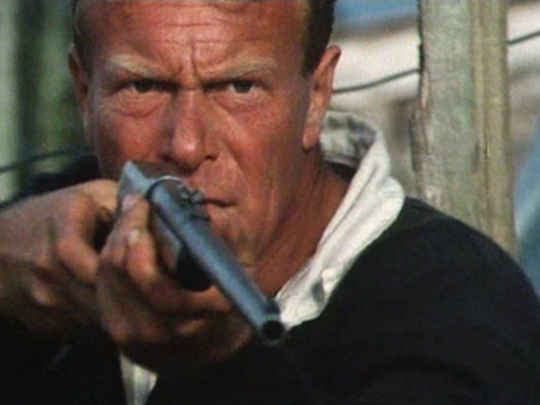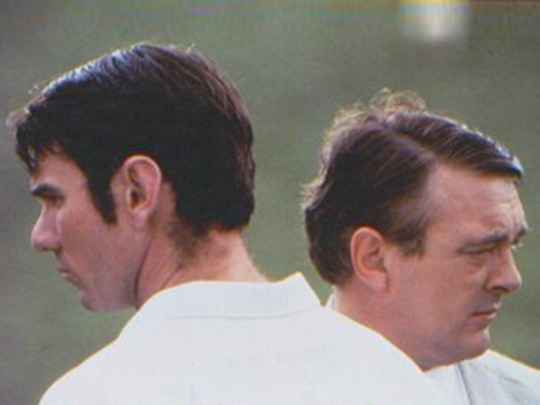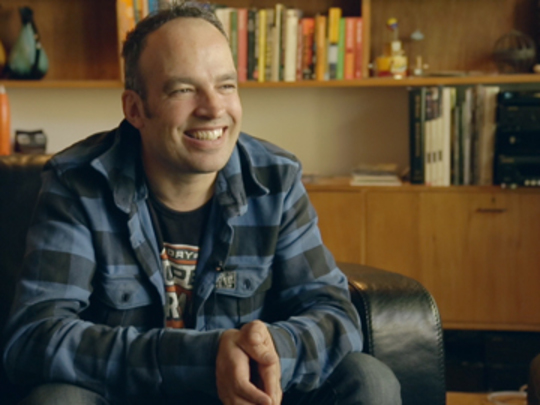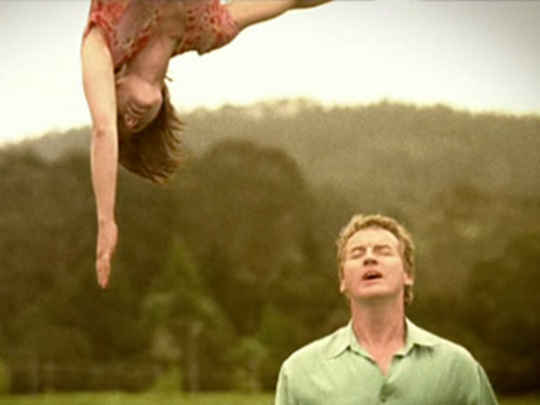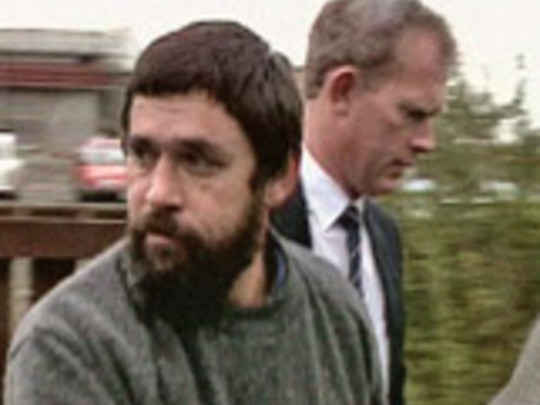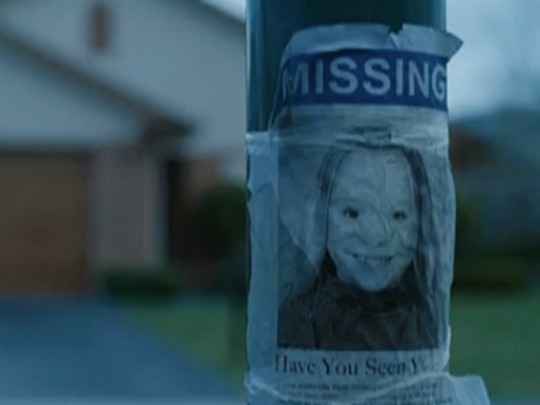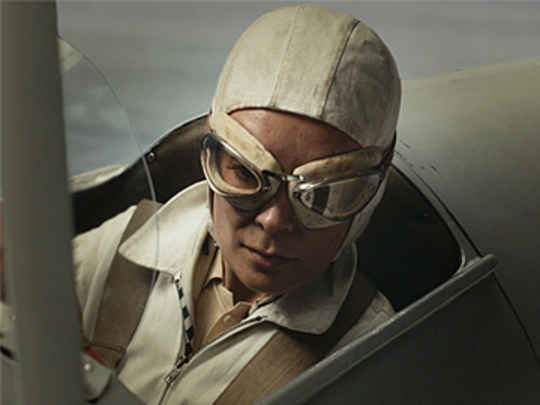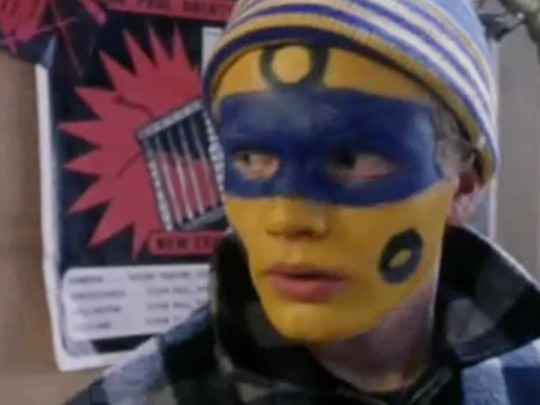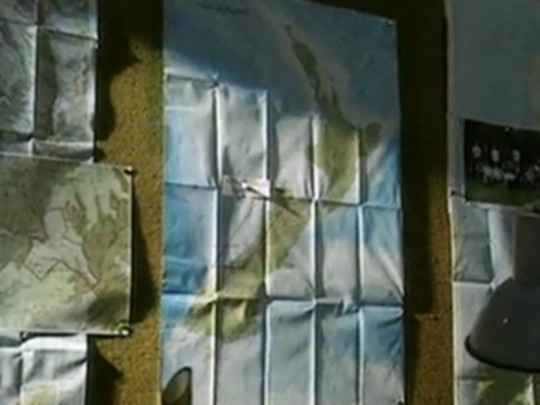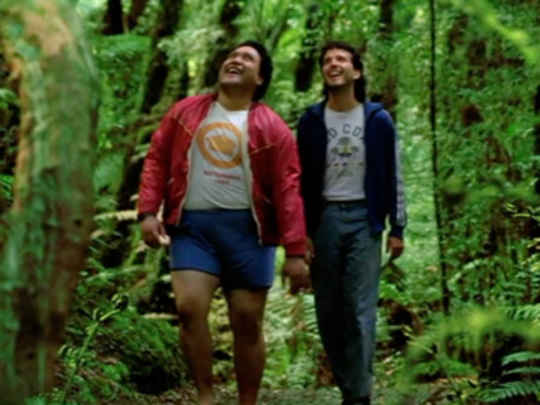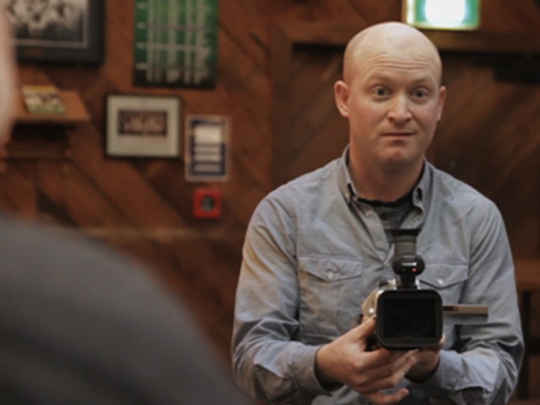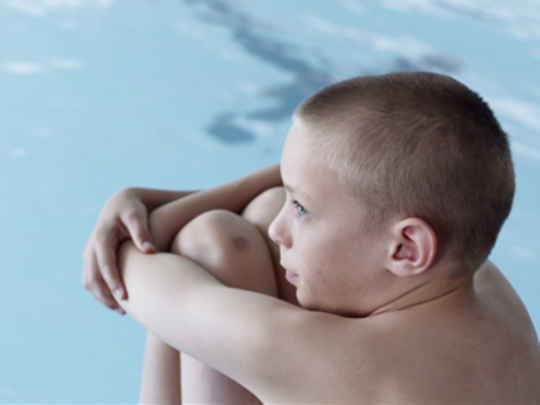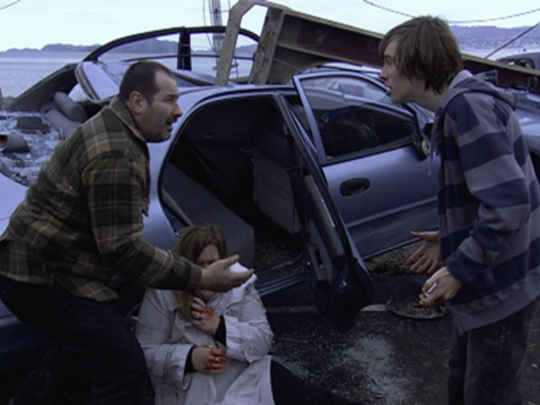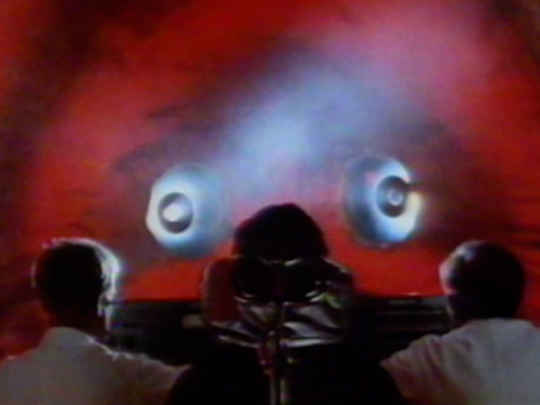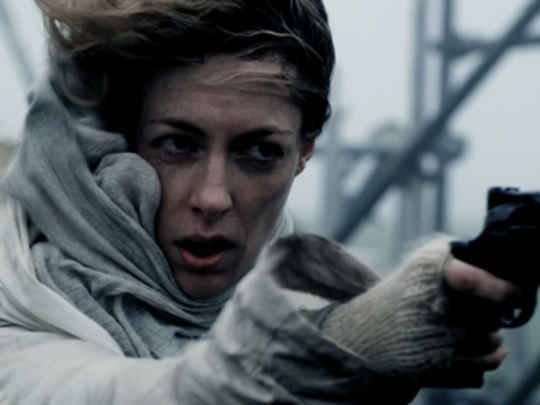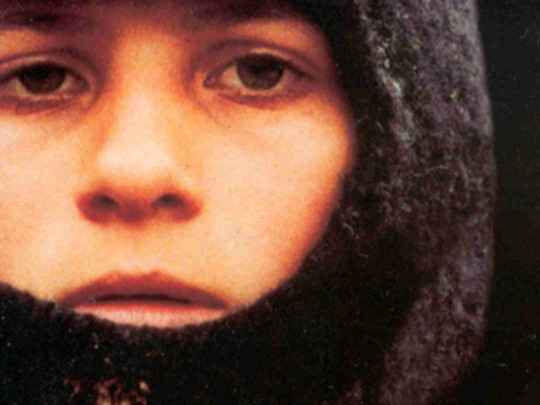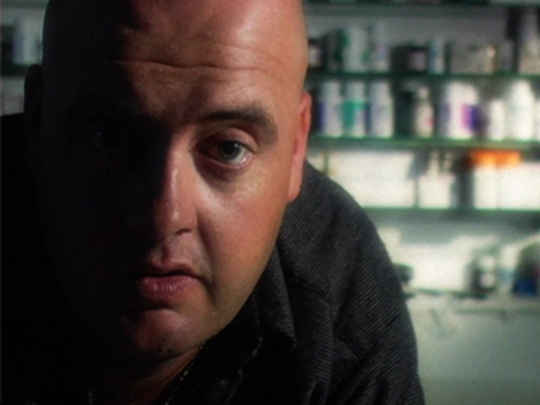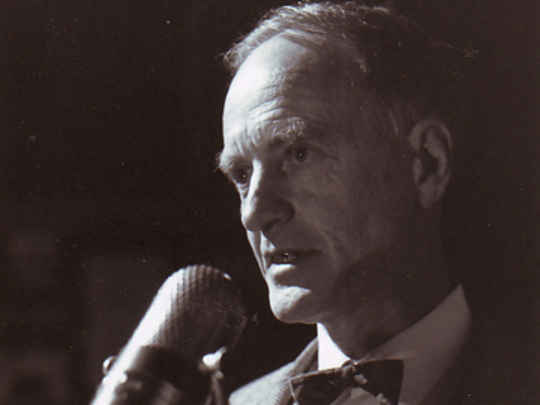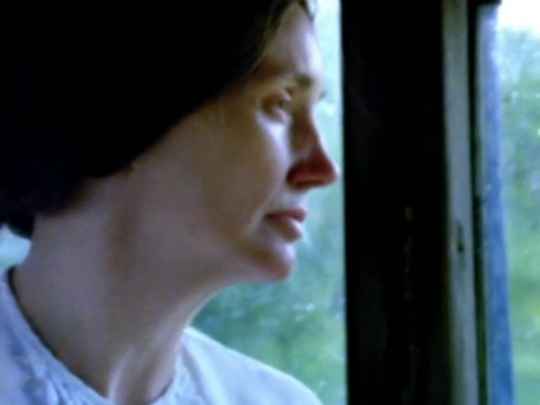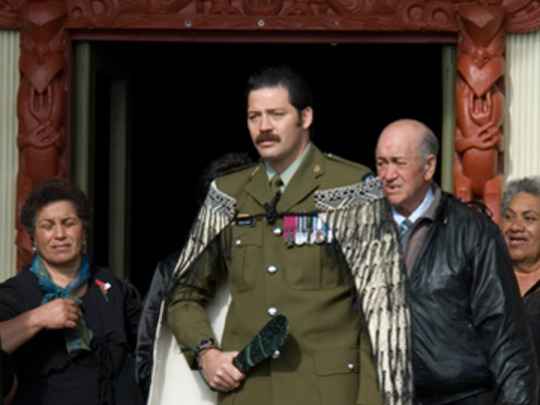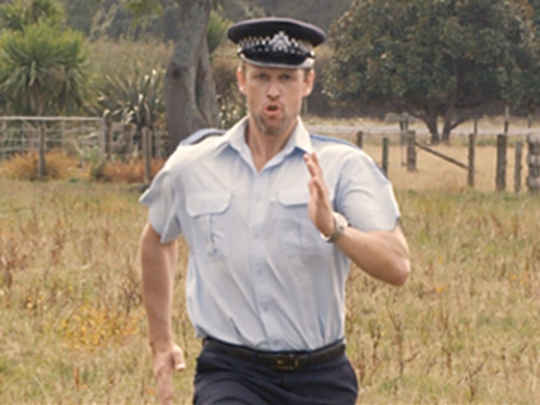The trailer for this feature film
An excerpt from this feature film
The credits for this feature film
Director Rob Sarkies interview
A featurette about the real Aramoana Massacre
Honouring Aramoana featurette
The making of Out of the Blue
Matt Sunderland interview
Karl Urban interview
Paul Glover interview
Tandi Wright interview
Simon Ferry interview
Behind-the-scenes footage from the making of the film
Out of the Blue
Film (Trailer, Excerpts, and Extras) – 2006
Out of the Blue
The opening sequence of Rob Sarkies’ Out of the Blue shows a metal detector being waved over a sandy beach. It’s a new day and the sun is shining. Metal detecting is a gesture of hope. After all, you might find some treasure beneath the sand. But you might also reveal an unexploded bomb.
It is this 'what’s below the surface' that Out of the Blue is concerned with. On 13 November 1990, the small coastal township of Aramoana, north of Dunedin, discovered that someone in their community was holding a dangerous secret — his own mental fragility and a military-style arsenal — and that bomb was ready to go off. After a minor argument with a neighbour, 33-year-old David Gray grabbed a semi-automatic rifle from his collection, and went on a rampage that resulted in the deaths of 14 people — four of them children, one of them Gray himself.
At the time it was the worst mass killing in New Zealand history, surpassing Stan Graham’s murder of seven people in Westland in 1941, a story filmed 40 years later as Bad Blood.
The massacre came as a huge shock to New Zealand. Gun violence of that kind had always been thought of as the domain of other countries. One result was the tightening of New Zealand’s firearms legislation (although not the outright banning of military-style semi-automatic weapons, as was done following the 2019 mosque shootings).
The idea that a film could (or should) be made of the events was simultaneously intolerable (to the survivors, and other locals) and inevitable (to many filmmakers). In the early 2000s, producer Steven O’Meagher found Bill O’Brien’s book, Aramoana: Twenty-Two Hours of Terror in a second-hand bookstore and was immediately "enthralled".
O’Brien had been the police communications director during the events of November 1990, and he realised that a film was probably going to be made of the story eventually. "I thought, 'If it’s going to be made, isn’t it better to be onside and help where you can and try and influence the way it’s going to be made, so it’s not too sensational, that they respect people’s dignity and the hurt that they've all suffered?'"
O’Meagher, and producing partner Tim White engaged Robert Sarkies to direct. It would be his second feature film following 1999 black comedy Scarfies in 1999, which was set in Dunedin, the nearest city to Aramoana.
Sarkies had been living in Dunedin at the time of the massacre and recalled hearing about the tragedy on the radio: "What I remember is the surreal feeling of kind of walking outside and looking up at the beautiful blue sky that there was that day and thinking, 'How could this be? How could just a few kilometres down the road there be a gunman on the loose in my town?'"
Sarkies, and his writing partner, veteran Graeme Tetley (Vigil), knew that for the film to be a success they would need the support — and contribution — of the Aramoana community. Before a word of the script had been written, they went to the small seaside settlement and rented a crib (cottage). They told people that they were there to listen, and that their door was open. People could help or challenge them. According to Sarkies, "Both happened".
"People were understandably nervous about the fact that a film was being made about that event because everyone, I think, had this image of the worst version of the film that could be made", Sarkies said in 2012. "There was certainly resistance, some resistance right through the shooting, and then, maybe with one or two exceptions, once the film actually came out and we showed it to the community, we had them on board. They could see what we'd done."
The instincts of those concerned about the film may have been justified. Three years after the film was released, the newly-installed Chief Executive of the NZ Film Commission, Graeme Mason, made a speech arguing that the film may have been more successful internationally if Hollywood superstar Russell Crowe had been cast as David Gray. As it turned out, Matthew Sunderland (the relative unknown who did get the role) was one of the revelations of the film, and it is almost impossible to imagine anyone else in the part.
One international name was eventually attached to the film. Karl Urban had used his high profile playing Eomer in The Lord of the Rings to secure parts in franchises like The Chronicles of Riddick and The Bourne Supremacy. But he still lived in Auckland, and his children were at the same kindergarten as O’Meagher’s. Through a chance meeting with O’Meagher’s partner, actor Theresa Healey, Urban learned that Out of the Blue was in production, and he approached the producers about a role.
Urban was cast as local policeman Nick Harvey, the everyman cop through whose eyes we see the early stages of the manhunt. One of the challenges of the film’s close adherence to the known facts of the 22 hours is that Harvey drifts out of the picture once the armed Anti-Terrorist Squad arrives on the scene. But Sarkies’ direction transfers our attention without losing any of that propulsive drive forward.
The real Nick Harvey — who by the time of the shoot, had become a funeral director – visited the set, as did several others who had been close to the events. They offered the actors and crew an unparalleled insight into the frightful and frightening experience.
Since Out of the Blue, Sarkies has worked on several other local true stories for cinema and television, notably Consent: The Louise Nicholas Story and a forthcoming [as of 2024] film about the Pike River disaster. But Out of the Blue stands out for its singular focus on the events of the two days, rather than a quest for motive or an examination of the aftermath. It's not that the film isn’t interested in those things, but more that Sarkies’ filmmaking provides that insight through visual details and character moments.
While it is impossible to be certain of David Gray’s state of mind leading up to the massacre, Phil Ivey’s production design for the interior of Gray’s crib – accurate enough that author Bill O’Brien said "it was just going back in time" — shows us plenty of what we would now call red flags, including Nazi military imagery and the hand-painted Gothic script nameplate on the crib — Hliòskjalf, which in Norse mythology is the throne that grants Odin omniscience.
But the film makes room for Gray’s essential humanity. Early on, there’s a visit to the crib by Constable Stu Guthrie (William Kircher) which appears to be entirely in Gray’s imagination, fuelling his sense of alienation and victimisation. Cinematographer Greig Fraser (Dune) contrasts the worlds inside and outside Gray’s crib by locking the camera off when it’s around him, while it’s much more lively when moving among the rest of the Aramoana residents.
Sunderland’s performance finds pathos instead of a monster. He tried to explain that insight in his own words in the making of documentary at the time the film was released: "… with the dawning of the new light, I think possibly that fantasy might have worn off and I think that's possibly when he realised what he'd done. And I actually don't think that he would have approved of his actions at the end of the day. I think it was because his sickness led him there and beyond that, he's just David who needs some help."
Out of the Blue got its world premiere at the Toronto international Film Festival in September 2006, opening commercially in New Zealand a month later. Reviews were largely strong wherever it went and, despite the bleakness of the subject matter, it found an appreciative audience.
There were no Kiwi feature film awards in 2007 because the Screen Director’s Guild decided there hadn’t been enough good films to make the categories competitive. But the following year, Out of the Blue won six awards at the 2008 Qantas Film and Television Awards from its nine nominations — including Best Picture (over $1 million) and Matthew Sunderland’s performance as Gray.
Yet despite Sunderland’s success, Out of the Blue isn’t really a film about David Gray. It’s about the community of Aramoana and how they responded during those two days of terror. They discovered strength that they didn’t know they had. Heroism. Compassion. All of that was under the surface, too, waiting to be discovered.
- Dan Slevin has been a film critic for around 20 years, and is a regular contributor to Radio New Zealand. He has managed cinemas, edited magazine OnFilm, and writes about the screen via his substack platform Funerals & Snakes.
Sources include
Emily Brooks, 'What people dont want is to be exploited: The people who've made films about Kiwi tragedies' Stuff website. Loaded 12 June 2021. Accessed 28 March 2024
Nick Dawson, 'Robert Sarkies, Out of the Blue' (Interview) - Filmmaker magazine, 19 October 2007
Jane Phare, 'Guilt and loathing in a small town' - Herald on Sunday, 7 November 2010
Davina Thornley, 'Adapting Robert Sarkies’ Film Out of the Blue: The At-Home and Abroad Reception of a New Zealand Tragedy'- Literature/Film Quarterly, 2018
'The minefield of portraying real life tragedy on screen' (Radio interview with Rod Sarkies) Radio New Zealand website. Loaded 18 June 2021. Accessed 28 March 2024
Unknown writer, 'Thirteen shot dead at Aramoana' NZ History website. Updated 17 July 2023. Accessed 28 March 2024
